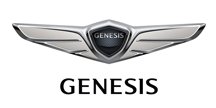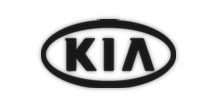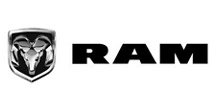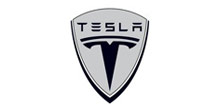Every SUV Between $25K and $35K and How to Choose
Around $30K is a common, reasonable budget for a new vehicle. Any more and you're buying more than you need. Any less and you might be limiting your yourself by choosing a car with reduced power, seating or other capabilities. You've done well to find this article. Now look at these 72 SUVs and follow our simple steps for narrowing your choices. We recommend using NADA's search tool throughout the process.
| Year | SUV |
|---|---|
| 2017 | Audi Q3 |
| 2018 | Audi Q3 |
| 2016 | Audi Q3 |
| 2017 | BMW X1 |
| 2018 | BMW X1 |
| 2016 | BMW X1 |
| 2018 | Buick Envision |
| 2017 | Buick Envision |
| 2018 | Chevrolet Equinox Die |
| 2016 | Chevrolet Traverse |
| 2017 | Chevrolet Traverse |
| 2018 | Chevrolet Traverse |
| 2018 | Dodge Durango |
| 2017 | Dodge Durango |
| 2016 | Dodge Durango |
| 2016 | Ford Edge |
| 2017 | Ford Edge |
| 2018 | Ford Edge |
| 2016 | Ford Explorer |
| 2017 | Ford Explorer |
| 2018 | Ford Explorer |
| 2018 | GMC Acadia |
| 2017 | GMC Acadia |
| 2016 | GMC Acadia |
| 2018 | GMC Terrain Die |
| 2016 | Honda Pilot |
| 2017 | Honda Pilot |
| 2016 | Hyundai Santa Fe |
| 2017 | Hyundai Santa Fe |
| 2018 | Hyundai Santa Fe |
| 2017 | Hyundai Santa Fe Sport |
| 2017 | INFINITI QX30 |
| 2018 | INFINITI QX30 |
| 2016 | INFINITI QX50 |
| 2017 | INFINITI QX50 |
| 2016 | Jeep Grand Cherokee |
| 2017 | Jeep Grand Cherokee |
| 2018 | Jeep Grand Cherokee |
| 2016 | Kia Sorento |
| 2017 | Kia Sorento |
| 2018 | Kia Sorento |
| 2016 | Lexus NX 200t |
| 2017 | Lincoln MKC |
| 2016 | Lincoln MKC |
| 2018 | Lincoln MKC |
| 2016 | Mazda CX-9 |
| 2017 | Mazda CX-9 |
| 2018 | Mazda CX-9 |
| 2016 | Mercedes-Benz GLA-Class |
| 2017 | Mercedes-Benz GLA-Class |
| 2018 | Mercedes-Benz GLA-Class |
| 2016 | Nissan Murano |
| 2017 | Nissan Murano |
| 2018 | Nissan Murano |
| 2016 | Nissan Pathfinder |
| 2017 | Nissan Pathfinder |
| 2018 | Nissan Pathfinder |
| 2017 | Nissan Rogue Hy |
| 2016 | Subaru Crosstrek Hy |
| 2017 | Subaru Outback |
| 2018 | Subaru Outback |
| 2016 | Toyota 4Runner |
| 2017 | Toyota 4Runner |
| 2018 | Toyota 4Runner |
| 2016 | Toyota Highlander |
| 2017 | Toyota Highlander |
| 2018 | Toyota Highlander |
| 2018 | Toyota RAV4 Hybrid |
| 2016 | Toyota RAV4 Hybrid |
| 2017 | Toyota RAV4 Hybrid |
| 2018 | Volkswagen Atlas |
| 2018 | Volkswagen Tiguan |
1. Choose Seating
SUVs in this price range vary in terms of how many passengers can fit in. What you need to do is make sure you have enough seats to carry your family around with. Don't buy extra seating unless you regularly transport additional passengers.
2. Choose a Brand
You might be partial to a particular brand. Don't oversimplify this decision, though. Your favorite brand might not be the best choice for you. Some brands tend to depreciate faster than others, which means you lose value quicker. Others don't come with great warranties. The price may also be lower, but the initial savings could be eaten up by costs in a short time period. Make sure you don't end up regretting your choice later on.
3. Choose a Trim
Trims define the level of luxury and "equippedness" of a vehicle. The "top of the line" trim is the most expensive, most luxurious and most equipped. Everyone wants the best trim but you shouldn't spend on features you don't need. The higher trims will have bigger engines, accordingly. Keep in mind that bigger engines cost more money because they consume more fuel. If you really want to, you can purchase a little extra power for fun. Don't overdo it, though. Are you really planning on racing or competing? If not, a modest engine will be just fine.
4. Choose a Dealer
You're almost there! The next step is to get quotes from your local dealers for comparison. Once you know who's offering the best deal, you can simply go get it or you can negotiate further. Just show your quotes from competing dealers for a little extra leverage.
Click here to get your free, no-obligation quotes from local dealers in just moments.








































